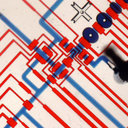Paeoniflorin ameliorates acute necrotizing pancreatitis and pancreatitis‑induced acute renal injury.
Słowa kluczowe
Abstrakcyjny
Acute renal injury caused by acute necrotizing pancreatitis (ANP) is a common complication that is associated with a high rate of mortality. Paeoniflorin is the active ingredient of paeonia radix and exhibits a number of pharmacological effects, such as anti‑inflammatory, anticancer, analgesic and immunomodulatory effects. The present study detected the potential treatment effects of paeoniflorin on acute renal injury induced by ANP in a rat model. The optimal dose of paeoniflorin for preventing acute renal injury induced by ANP was determined. Then, the possible protective mechanism of paeoniflorin was investigated. The serum levels of tumor necrosis factor (TNF)‑α, interleukin (IL)‑1β and IL‑6 were measured with enzyme‑linked immunosorbent assay kits. Renal inflammation and apoptosis were measured by immunohistochemistry and terminal deoxynucleotidyl transferase‑mediated dUTP nick end labeling assay. The expression of nitric oxide in kidney tissues was also evaluated. The p38 mitogen‑activated protein kinases (MAPKs) were measured by western blotting. The results shown that paeoniflorin may ameliorate acute renal injury following ANP in rats by inhibiting inflammatory responses and renal cell apoptosis. These effects may be associated with the p38MAPK and nuclear factor‑κB signal pathway.



